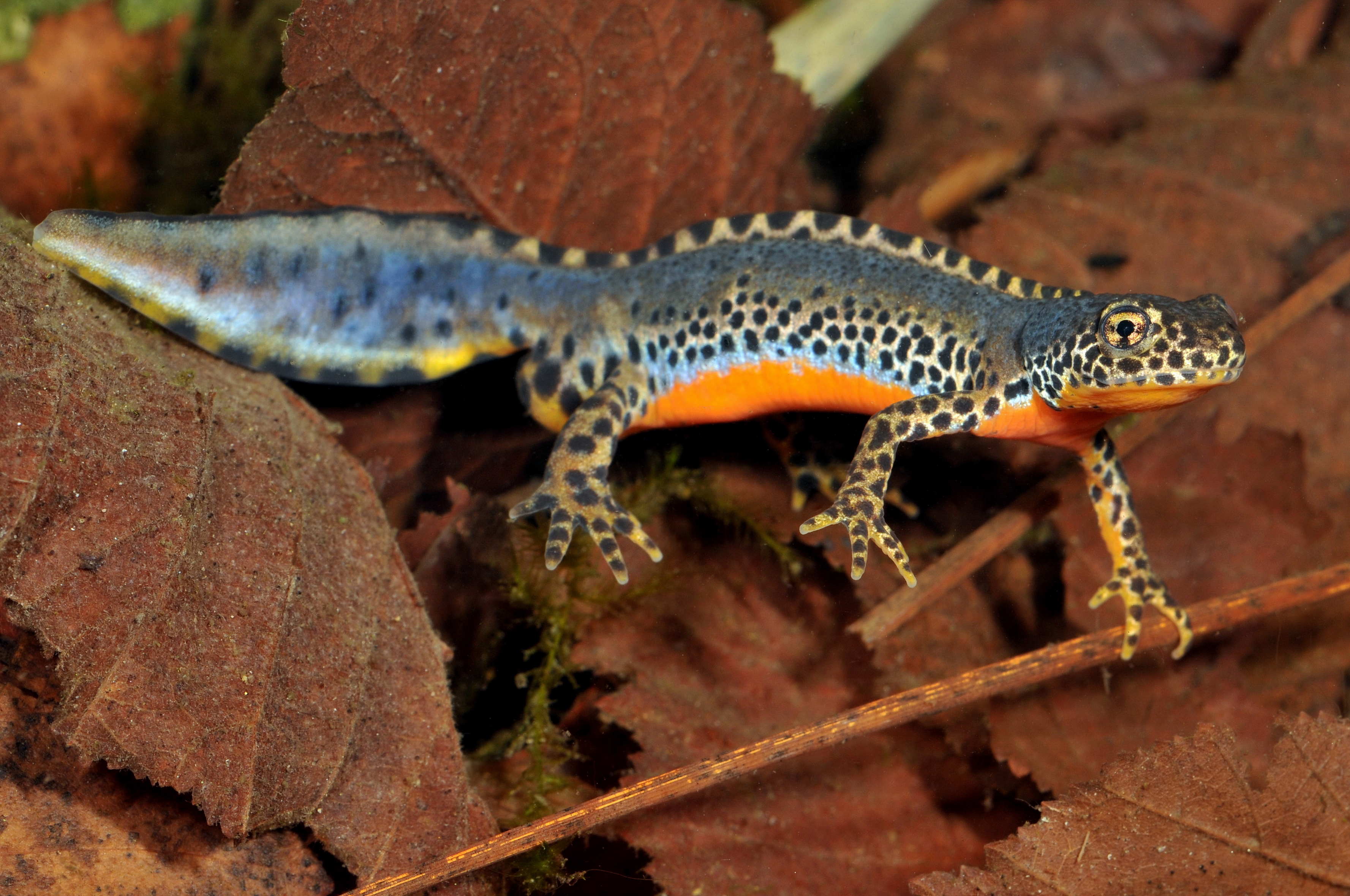Since 2006, the German Society for Herpetology and Herpetoculture (DGHT) in collaboration with various partners, titles every year alternately the Reptile of the Year and the Amphibian of the Year. This campaign aims at gaining public attention to wild herps in Europe and is accompanied by various activities such as meetings and printing materials, i.e. freely available brochures and posters.
2019 was the year of the Alpine newt (Ichthyosaura alpestris) which prompted the workgroup “field herpetology and species conservation” of the DGHT to dedicate its annual meeting to this amphibian species. Invited by the Austrian Society for Herpetology (ÖGH), the conference took place in the Schlossmuseum Linz, Austria, in usual cooperation with the NABU Federal Committee for Field Herpetology & Ichthyofaunistics. It was obvious to hold the meeting in Austria, as the species has three links with this country. Firstly, by the Viennese zoologist Laurenti as describer of the species, secondly with Mount Ötscher in Lower Austria as Terra typica and thirdly, because of its central location in the distribution area of the Alpine newt. About 70 persons attended the two-day meeting, which took place on November 23-24, 2019. Besides participants from Austria and Germany, guests and speakers from Switzerland, Belgium and Bulgaria were also present.
In an almost traditional way Axel Kwet, managing director of the DGHT, started with a general introductory lecture on the species and also talked about the campaign “Amphibian/Reptile of the Year”. Afterwards Andreas Maletzky, president of the ÖGH, reported interesting facts about the Alpine newt from Austria and presented older and newer research work and its results. Dirk Alfermann (DGHT) then gave an insight into the species in Bavaria mainly based on the species chapter of the distribution atlas “Amphibians and Reptiles in Bavaria” published shortly before, in mid-November 2019. Many interesting talks followed on: the Alpine newt in Denmark (Uffe Mikkelsen and Kåre Fog), the current distribution and ecology in Bulgaria (Yurii Kornilev), the distribution, range limits and habitat in the Northwest German lowlands (Richard Podloucky), the distribution in Saxony (Holger Lueg), habitat selection and spatial interference (Martin Schlüpmann), detailed studies of the populations in the Erzgebirge (Andreas and Claus Püwert), observations on the reproduction in temporary pioneer waters in the Tyrolean Lechauen (Florian Glaser), various examples of pigment and developmental anomalies of the Alpine newt in Switzerland (Kurt Grossenbacher), behavioural aspects of mating and reproduction, in particular the males’ choice of partner (Katharina Foerster), the costly renaturation of an Alpine lake in Styria, which had lost its important function as a spawning ground for amphibians due to an established fish population (Robert Schabetsberger), the situation and spread of the salamander disease (Bsal) in North Rhine-Westphalia (Martin Schlüpmann) and Austria (Florian Glaser), the comprehensive environmental education activities around the Alpine newt from the AURING Association (Ute Nüsken), and on the first describer of the Alpine newt, Josephus Nicolaus Laurenti (Günter Gollmann). A great plenary talk was given by Mathieu Denoël, president of the Societas Europaea Herpetologica“ (SEH), who works at the University of Liège in Belgium and has been particularly involved for many years in the developmental biology of newts. In another short presentation, Mathieu briefly introduced the SEH and its work.
The meeting came to a wonderful closure with a film about the Amphibian of the Year by Eric Egerer, who unfortunately could not be present in person. Consequently, Axel Kwet took over the commentary of the great pictures from the habitat as well as the biology, especially the complex mating behaviour and as well as hunting and feeding behaviour.
By Claudia Koch, German Society for Herpetology and Herpetoculture (DGHT)
Photo © Andreas Meyer

